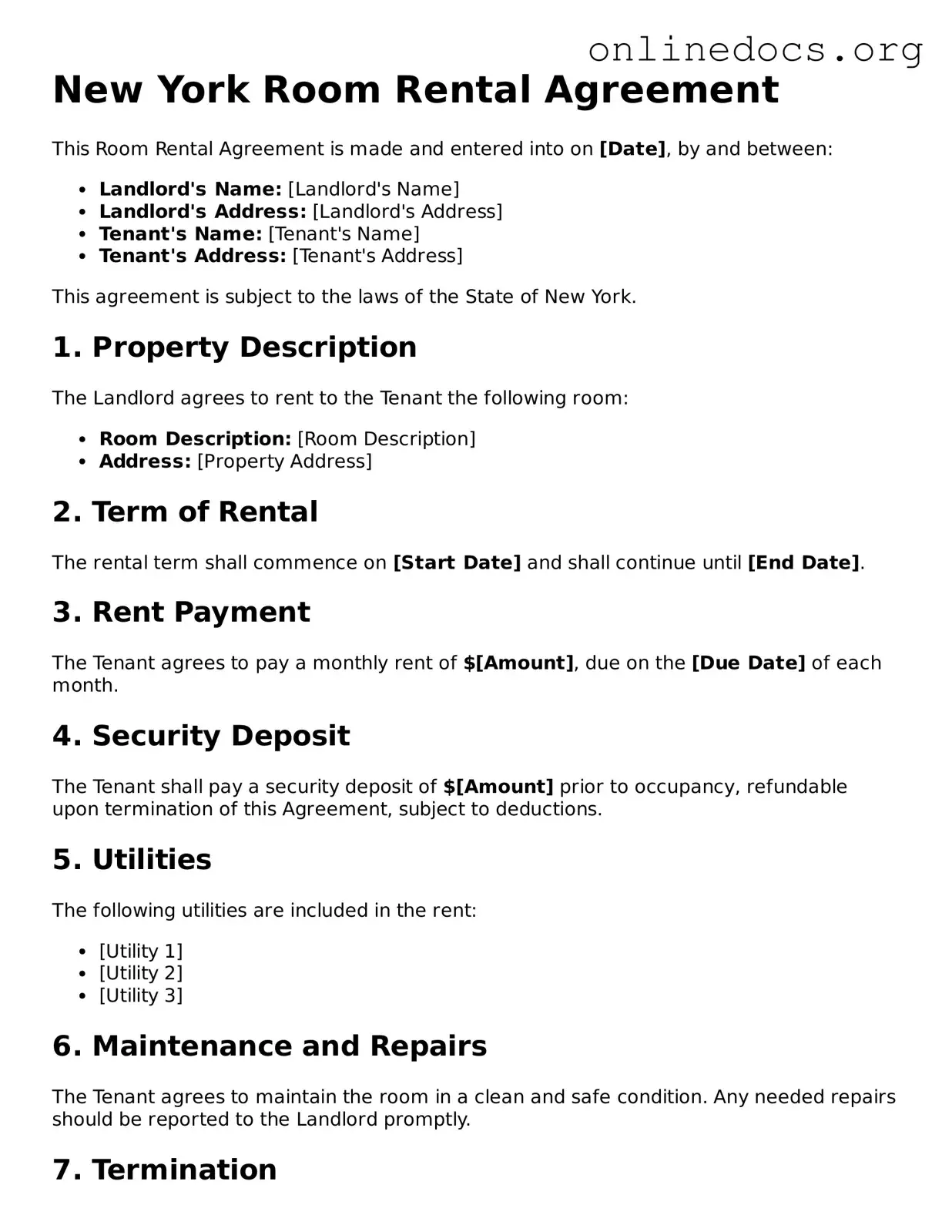The Lease Agreement is a legally binding contract between a landlord and tenant that outlines the terms of renting a property. Similar to the Room Rental Agreement, it specifies the duration of the rental period, the amount of rent due, and the responsibilities of both parties. Both documents serve to protect the rights of the landlord and tenant, ensuring clear expectations are set from the beginning of the rental relationship.
The Sublease Agreement allows a tenant to rent out their leased property to another individual, known as the subtenant. This document mirrors the Room Rental Agreement in that it establishes terms such as rent amount, duration, and rules for the property. It is essential for the original tenant to obtain permission from the landlord before subleasing, similar to how a Room Rental Agreement requires landlord consent for room rentals.
The Month-to-Month Rental Agreement provides flexibility for both landlords and tenants, allowing them to rent a property on a month-to-month basis without a long-term commitment. Like the Room Rental Agreement, it outlines the rental terms, including payment and notice periods for termination. This type of agreement can be beneficial for individuals who need short-term housing solutions.
The Commercial Lease Agreement is used for renting business properties. It shares similarities with the Room Rental Agreement in that it details the terms of use, rent, and responsibilities of the parties involved. Both documents aim to protect the interests of the landlord while providing a clear framework for the tenant's obligations.
The Rental Application form is a preliminary document used to screen potential tenants. While it does not outline rental terms, it serves a similar purpose by gathering essential information about the applicant. This document often includes details such as income, rental history, and references, which help landlords assess whether to enter into a Room Rental Agreement.
The Eviction Notice is a document that informs a tenant of the landlord's intention to terminate the rental agreement due to violations of its terms. While it may seem different from the Room Rental Agreement, it is closely related, as it outlines the consequences of failing to adhere to the agreed-upon terms. Both documents emphasize the importance of compliance with rental obligations.
The Security Deposit Agreement specifies the amount of money a tenant must pay to cover potential damages or unpaid rent. This document is similar to the Room Rental Agreement in that it establishes the conditions under which the deposit may be withheld. Both agreements aim to protect the landlord's property while ensuring the tenant understands their financial responsibilities.
The Roommate Agreement is a document that outlines the terms of living together in a shared space. It is akin to the Room Rental Agreement in that it addresses rent, responsibilities, and house rules. This agreement is particularly useful for individuals sharing a rental property, as it helps prevent misunderstandings and conflicts among roommates.
The Property Management Agreement is a contract between a property owner and a management company. It details the responsibilities of the management company in overseeing the rental property. While it primarily serves the property owner, it is similar to the Room Rental Agreement in that it sets forth the expectations and duties of the parties involved in the rental process.
If you're considering purchasing a vehicle, it's crucial to understand the legal documents involved in the process, particularly the California Vehicle Purchase Agreement, which outlines the specific terms and conditions agreed upon by both the buyer and seller. For more information on this important document, visit californiapdfforms.com/vehicle-purchase-agreement-form/ to get started on your vehicle purchase smoothly.
The Tenancy Agreement is a broader term that encompasses various types of rental agreements, including the Room Rental Agreement. It outlines the rights and responsibilities of both landlords and tenants, similar to the Room Rental Agreement. This document serves as a foundation for the rental relationship, ensuring both parties understand their obligations and rights.
